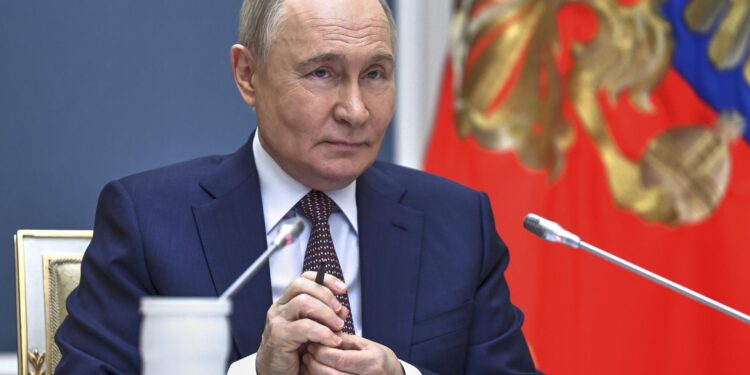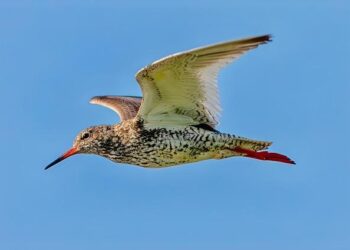Rising Tensions: The Consequences of Russia’s Military Buildup
In a notable escalation of military preparedness, Russian President Vladimir Putin is reportedly gearing up to mobilize an amazing 600,000 troops as part of a strategy aimed at solidifying his influence along NATO’s northern borders. As the friction between Russia and the Western alliance escalates, analysts are scrutinizing the potential ramifications of this significant military expansion. The prospect of a swift offensive not only poses a substantial threat to NATO’s collective defense but also raises alarms among member states that may be vulnerable to Russian ambitions. This article delves into the strategic implications of such an extensive military operation and how Putin might leverage this situation to undermine NATO’s credibility while exacerbating existing divisions within the alliance. With Europe on high alert, these developments could alter geopolitical dynamics for years to come.
Analyzing Putin’s Military Approach: Reasons Behind Troop Mobilization
The recent troop mobilization by Putin signifies more than just a show of force; it embodies a strategic maneuver designed to exploit perceived weaknesses within NATO. By amassing approximately 600,000 soldiers, he seems intent on focusing on regions along the alliance’s northern edge—areas that have seen increasing tensions recently.This action could fulfill several strategic aims:
- Exhibition of Strength: A powerful display can instill fear in adversaries and project an image of superiority.
- Psycho-Strategic Operations: The sudden surge in troop numbers serves as a warning signal for NATO members, possibly undermining their unified front.
- A Trigger for Further Actions?: Depending on NATO’s response, this show of strength might provide justification for subsequent aggressive actions.
A thorough understanding necessitates evaluating various scenarios that may emerge from this situation by considering factors such as troop readiness, geographical advantages, and possible responses from NATO:
| Scenario Type | Plausible Outcomes | NATO Countermeasures |
|---|---|---|
| Sneak Attack | Rapid territorial gains by Russia | Swift deployment support to Baltic nations |
Assessing NATO’s Response: Strengthening Northern Defenses Against Threats
The current global landscape has raised critical questions regarding NATO’s ability to protect its northern territories against potential aggressions. As tensions escalate—particularly with ongoing discussions about military buildups—member countries must reevaluate their defensive strategies and levels of readiness. Key factors influencing NATO’s response include:
- Sufficient Military Presence: Increasing troop levels in Eastern Europe as deterrence against possible aggressors.
- Enhanced Intelligence Sharing :Improving intelligence frameworks among allies to effectively anticipate hybrid warfare tactics.
- Collaborative Training Exercises :Conducting rigorous military drills among member states for improved readiness and interoperability.
NATO must not only bolster its defensive posture but also reconsider partnerships with non-member states sharing similar security interests during these challenging times. Countries like Finland and Sweden have maintained close ties with the alliance; they could play crucial roles in developing cohesive defense strategies against threats from northern fronts . To address risks effectively , integrating political , economic ,and military dimensions into one thorough approach is essential . Key components may include :
| Strategic Initiative | Objective | |||
|---|---|---|---|---|
| Heightened Readiness | To respond swiftly against emerging threats | |||
| Strengthened Alliances | To establish unity against aggression | |||
| Enhanced Cyber Defense | The protection critical infrastructure from cyber attacks .Counteracting Potential Aggression: Recommendations for Fortifying Collective Defense Among Allies  ​ ​ ​ ​ ​  ​  ​  ​  ​  ​  ​   ​​​​  ​​​​  ​​​​  ​​​​  ​​​​  ​​​​  ​​​​  ​​​​​The imminent threat posed by large-scale conflict with Russia underscores an urgent need for enhanced collective defense measures among NATO allies . To effectively counteract potential aggression emanating from Putin ‘ s regime , member nations should prioritize improving rapid deployment capabilities through engaging joint exercises simulating diverse scenarios ensuring optimal troop preparedness . Additionally , strengthening intelligence-sharing mechanisms amongst allies is vital enabling preemptive threat detection facilitating agile responses during crises . Here are some key strategies designed fortify defenses along Northern Flank :
Beyond enhancing defensive capabilities fostering deeper connections with Eastern European partners remains crucial establishing united fronts together facing common challenges posed by aggressors strengthening bilateral multilateral relations neighboring countries bordering Russia creates layered defense systems capable addressing incursions efficiently.NATO should contemplate forming specialized response teams dedicated specifically tackling incursions occurring within Northern Flank.Data-driven assessments strategic planning facilitated exchanging insights collaborating regional leaders can pave pathways towards effective implementation roadmaps including:
|
















